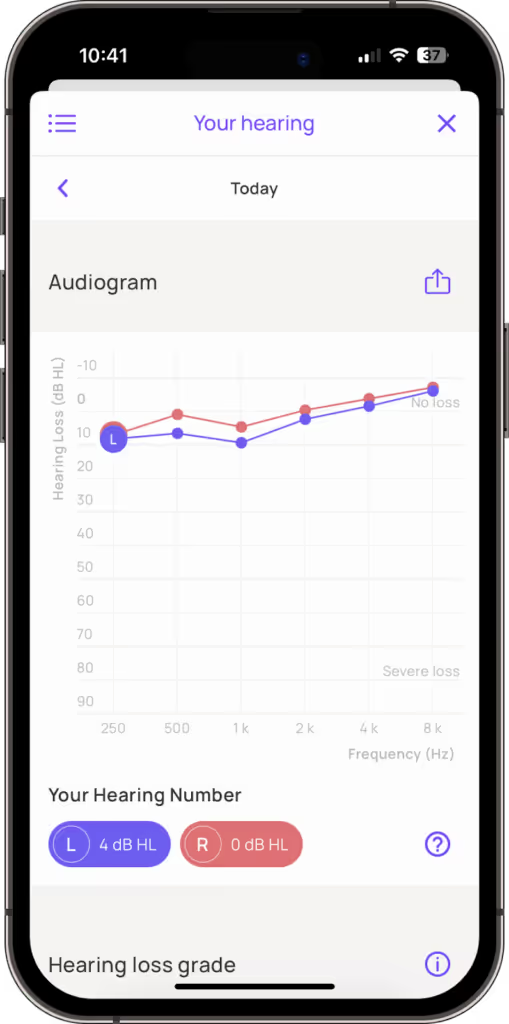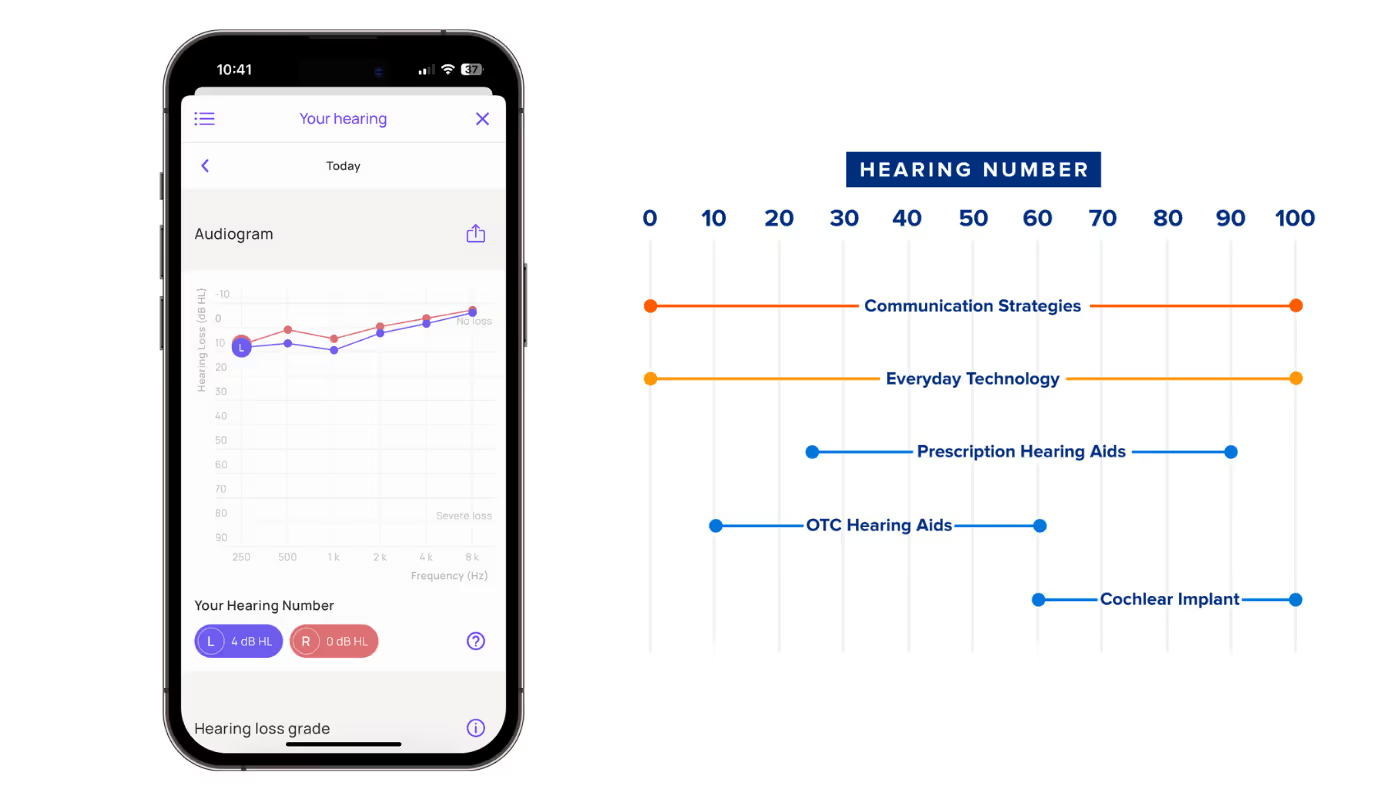In September 2022, Johns Hopkins has launched the ‘Know Your Hearing Number’ campaign to (inter)nationally address hearing loss. This new approach to educating the public about hearing health also coincides with the US Food & Drug Administration recently releasing its long-awaited regulations for over-the-counter hearing aids. This marks a huge step towards raising public awareness of hearing loss and the consequences it can have for the individual and social life of a person if it remains unrecognized.
A retrospective, propensity-matched cohort study published in JAMA Otolaryngology–Head & Neck Surgery in 2019, found that hearing loss was significantly associated with an increased 10-year risk of dementia, depression, falls, and myocardial infarction. To be able to prevent and treat hearing loss, the Johns Hopkins ‘Know Your Hearing Number’ campaign introduces the Hearing Number as a simple, but effective way to raise awareness for hearing health and its relation to wellbeing.
What is the Hearing Number?
The Hearing Number is a metric that can help you better understand your hearing and how it changes over time. Your Hearing Number reflects how loud speech must be for you to hear it. The number typically ranges from about 0 to 100 decibels (dB), with higher numbers indicating louder sounds are necessary.
Why you should know your Hearing Number
As the Hearing Health specialists of Johns Hopkins explain, knowing your Hearing Number is a step toward taking control of your hearing health now and throughout your life. Knowing your Hearing Number will help you to better understand your own hearing with an objective metric that you can monitor over time.
Your Hearing Number can also support you in knowing when to adopt communication strategies or hearing technologies that will improve your hearing and overall quality of life. It also has the potential to raise awareness whether you may be at greater risk for adverse health outcomes that are linked to hearing loss, such as dementia and depression.
If you know your Hearing Number, it can help you to become more comfortable talking about your hearing with loved ones and health care professionals.
How do you get your hearing number?
Mimi Hearing Test App is a free digital hearing test app. The user-friendly test is easy to complete and is the perfect application if you want to monitor your hearing health. You can check your hearing number at home with an IPhone or iPad by downloading the Mimi Hearing Test App. In the Mimi app, choose the “Pure Tone Threshold Test.”
After you take the hearing test your Hearing Number for your left and right ear will appear directly beneath your audiogram. The audiogram shows the quietest sounds you can hear at different frequencies. The closer a mark or point is to the top of a graph, the quieter the sound you can perceive.
The concept of a perfect score does not apply to the Hearing Number. As the Hearing Number approaches 0, your ability to perceive soft sounds increases.
You may be surprised to see your hearing is better than you thought. However, having knowledge of your Hearing Number provides a reference point for tracking changes in the future, rather than guessing about your hearing health. Everyone’s hearing changes as we get older because parts of the inner ear wear out over time, which occurs naturally as part of our lifelong hearing health journey. This emphasizes the importance of continually checking your Hearing Number, to find any changes as early as possible.

Now you know your number, what's next?
Your Hearing Number indicates the level at which speech sounds must be for you to hear them. A higher Hearing Number implies a need for louder sounds. Monitoring your number over time can provide valuable insights into changes in your hearing. Armed with this knowledge, you can implement effective communication strategies and leverage technology to enhance your hearing experience.
For example you can employ simple tactics like using noise protection to safeguard your hearing, or adopting communication techniques tailored to your needs. Additionally, you can leverage everyday technologies, such as customizing smartphone and headphone outputs, to meet your unique hearing requirements.

Let the hearing wellbeing begin
Start your hearing wellbeing journey today and test your hearing with the free Mimi Hearing Test App. Find out more about the Johns Hopkins ‘Know Your Hearing Number’ resources and take a deep dive into the topic with 'Hearing Loss for dummies' by Frank Lin and Nicholas Reed from the Johns Hopkins School of Medicine.
